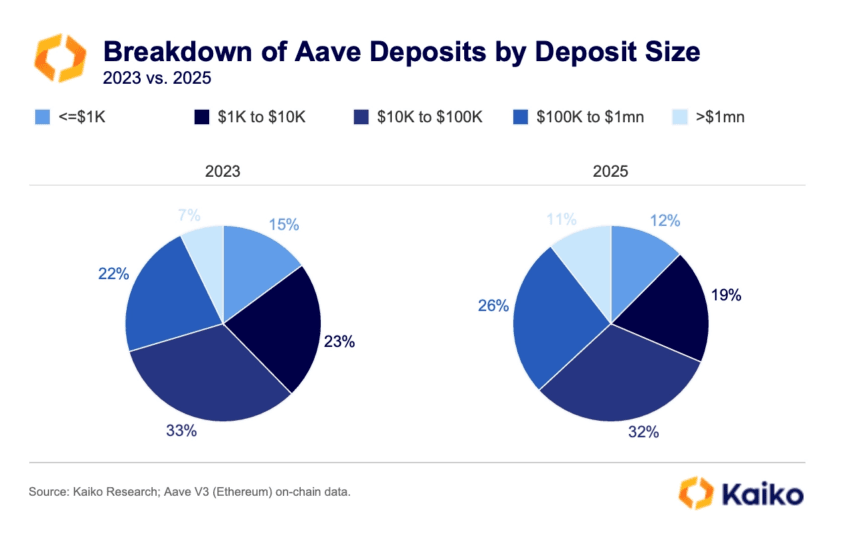The leading non-custodial liquidity protocol Aave (AAVE) has established itself as a key player in the decentralized finance (DeFi) space, controlling about half of the lending market share in decentralized finance.
However, as the crypto market remains euphoric amid the big rise in 2025, several concerns within Aave may have severe consequences for the market overall.
The risks behind Aave's dominance in decentralized finance and market control
According to data from DefiLama, the total value locked (TVL) in Aave is $36.73 billion. This represents nearly 50% of the total $75.98 billion TVL. Furthermore, the protocol's TVL reached an all-time high of $40 billion last week.
This dominant position makes Aave the 'backbone' of decentralized credit systems, enabling users to borrow and lend assets without intermediaries. However, this central role also means that if Aave faces issues, it could trigger a cascading effect across the entire market.
But what could go wrong? One critical concern is the concentration of influence within the protocol's governance.
Previously, Sandeep Nailwal, founder and CEO of the Polygon Foundation, expressed concerns about the governance structure within Aave. He pointed out that the protocol is governed by a single individual (Stani Kulechov, the founder).
Nailwal noted that Kulechov has significant control over proposals and voting, managing the platform based on his personal preferences.
He wrote: “It also threatens the remaining voters to vote according to his proposals (whom I spoke to personally after the Polygon proposal). This is when he already has a massive delegated voting power.”
The inflation of the user base forms vulnerabilities in Aave. Data from Kaiko Research indicated a shift in 2025, with the percentage of large users holding collateral exceeding $100,000 rising from 29% in 2023 to 37%. At the same time, the percentage of small users with deposits under $1,000 fell from 15% to 12% over the past two years.
Kaiko noted: “The percentage of users with more than $100,000 in collateral grew from 29% in 2023 to 37% in early 2025, with the $100,000 to $1 million collateral bracket rising to 26% and the $1 million+ bracket to 11%, each increasing by about four percentage points. Over time, the growth in large depositors has mostly come at the expense of smaller ones with deposits between $1,000 and $10,000.”

This concentration of power among high-net-worth participants increases the likelihood of liquidity shocks and protocol instability. If these users withdraw en masse or face liquidation events, the effects could reverberate across interconnected DeFi platforms.
Finally, excessive expansion also poses a significant risk. Aave's deployment across 16 chains may have strained operational resources. Leading Defi analyst Ignas confirmed on X that some of these expansions are operating at a loss, increasing financial and technical risks.
The publication mentioned that "We have reached an L2 saturation point: Aave has been deployed on 16 chains, but new deployments are operating at a loss (Soneium, Celo, Linea, zkSync, Scroll)".
The repercussions of these risks extend beyond Aave itself. As one of the most dominant players in DeFi, any disruption, whether due to governance failure, concentration of users, or excessive expansion, can undermine trust in decentralized lending and destabilize the broader ecosystem. Therefore, addressing these challenges will be crucial for Aave.
